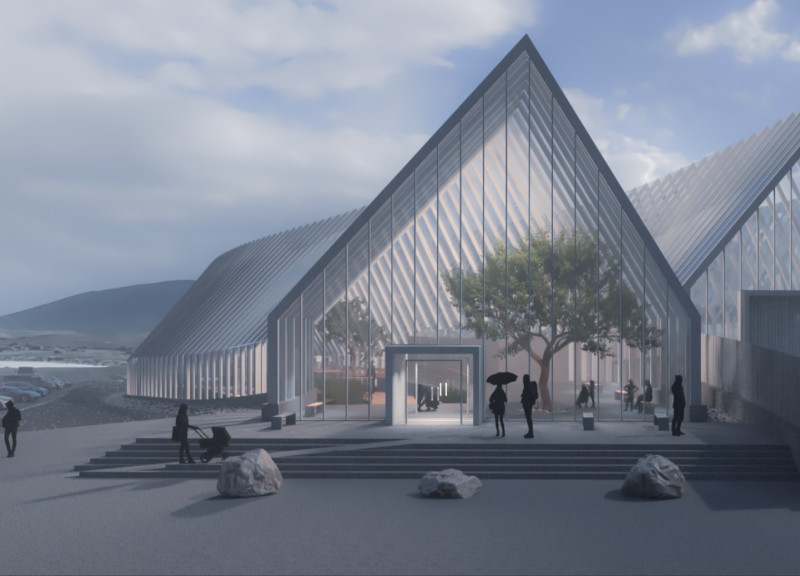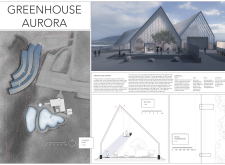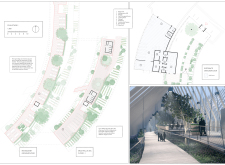5 key facts about this project
The Greenhouse Aurora serves as an innovative architectural project designed to function as an agricultural facility and visitor educational center. It embodies a commitment to sustainability and ecological awareness while enhancing community engagement through its design. The structure uses an intelligent design strategy to facilitate agricultural production, provide educational opportunities, and promote interaction with nature.
The building features a series of glulam timber frames that create a robust structural system, allowing for expansive inner spaces. Large glass facades provide natural light while promoting visibility into the agricultural processes within the greenhouse. Concrete elements form a durable foundation, supporting the entire structure while ensuring longevity and resilience against environmental challenges. The incorporation of steel allows for efficient connections within the framing system, optimizing the overall design.
Architectural Innovation and Community Engagement
What sets the Greenhouse Aurora apart from other similar projects is its integration of suspended visitor spaces, supported by steel wires and glulam frames. This unique approach enhances the experience of visitors, allowing them to view agricultural activities from above and engage with the ecosystem actively. The design prioritizes flexible spaces that encourage social interaction, including dedicated areas for dining and gatherings, which foster community involvement.
Additionally, the tiered layout of the greenhouse introduces cultivation terraces, where various plant species can be nurtured in distinct environmental conditions. This design approach not only enhances the educational aspect by showcasing different agricultural practices but also aligns with the principles of permaculture.
Sustainable Material Choices and Design Efficiency
The selection of materials in the Greenhouse Aurora reflects a strong focus on sustainability and functionality. The glulam timber frames are both eco-friendly and aesthetically pleasing, promoting a connection to nature. The extensive use of glass minimizes energy consumption through natural lighting, further reinforcing the environmental objectives of the project.
The concrete foundation ensures durability while maintaining a minimal environmental impact. Overall, the architectural design emphasizes efficiency and performance, allowing the facility to operate effectively while minimizing its ecological footprint.
To explore the intricate design details and technical specifications of the Greenhouse Aurora further, review architectural plans, sections, and designs that illustrate the depth of thought applied to this project. By examining these elements, you can gain deeper insights into the architectural ideas that define this facility.






















































